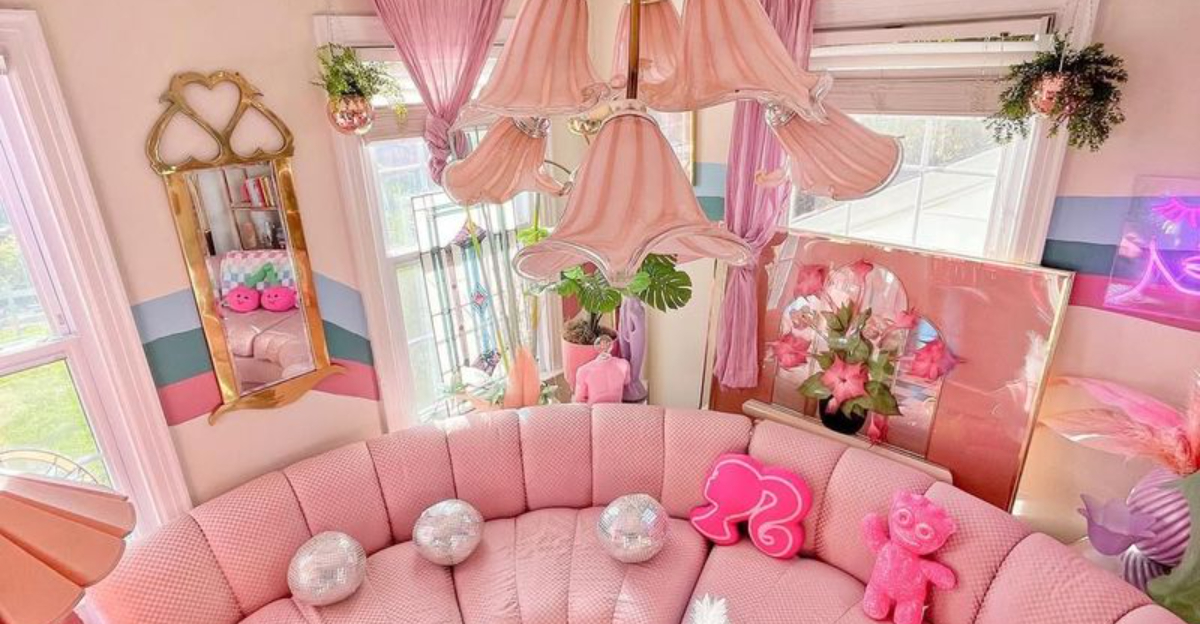Vintage home décor brings a nostalgic charm to our spaces, but certain design choices from the past can feel outdated today. This article highlights common vintage décor mistakes and offers modern solutions to update your home.
Let’s blend retro charm with modern aesthetics to create functional and stylish spaces, preserving the essence of vintage while ensuring relevance in today’s interiors.
1. Overuse of Floral Patterns
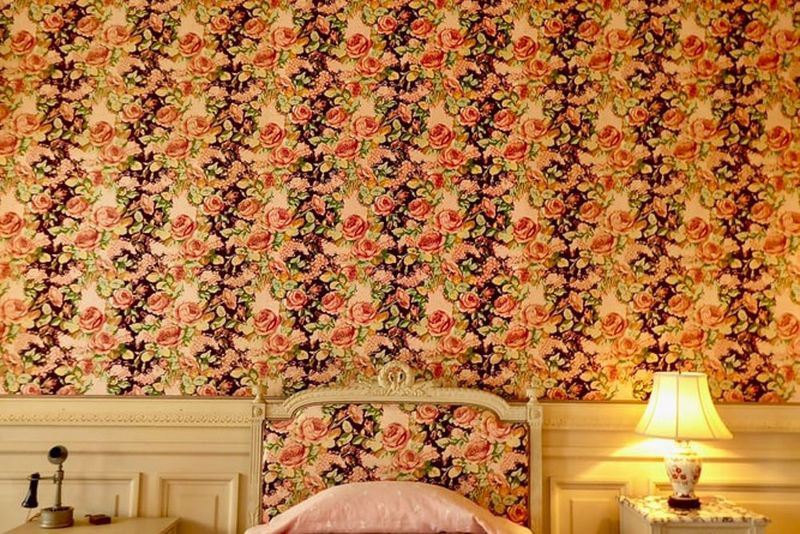
Floral patterns, once a staple in vintage décor, can overwhelm a room when overused. Instead of filling your space with floral motifs, choose a few accents, like throw pillows or artwork, that feature these patterns.
Pair them with solid colors or minimalist designs to maintain balance and prevent the room from feeling cluttered. This approach keeps the charm of floral designs while enhancing the modernity of your home.
2. Dark Wood Furniture Everywhere

Vintage dark wood furniture can make spaces feel heavy and outdated. To lighten the atmosphere, mix these pieces with lighter woods and modern finishes. Introducing metallic accents will create balance and inject a sense of modernity into the room.
This combination not only refreshes the space but also maintains the classic essence associated with vintage designs, resulting in a harmonious blend of old and new.
3. Cluttered Surfaces
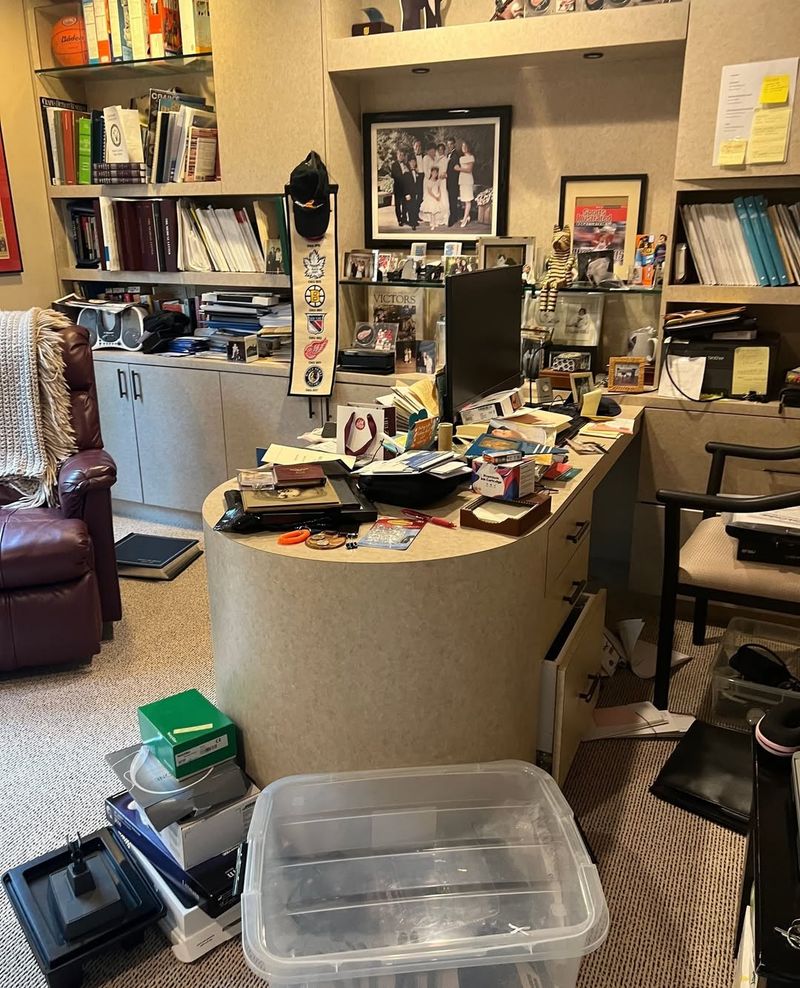
Vintage homes often feature numerous trinkets and knick-knacks, leading to cluttered surfaces. Simplifying these areas by selecting a few statement pieces allows for a more spacious and flowing environment.
Keeping surfaces clear enhances the overall aesthetic, allowing each item to stand out while ensuring the room feels open and welcoming. This strategy maintains vintage charm with a contemporary flair, emphasizing quality over quantity.
4. Shiny, Overpolished Wood
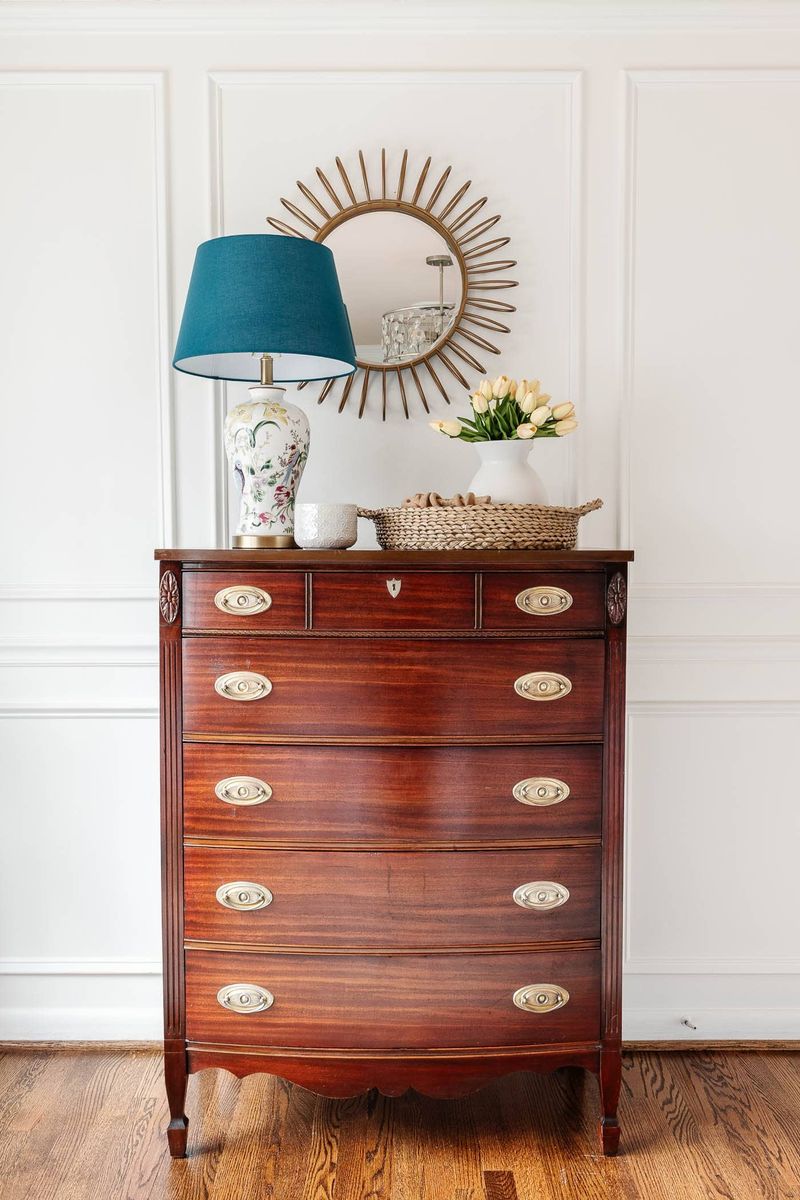
Over-polished vintage wood furniture can appear too shiny and outdated. A matte or satin finish can modernize the look, making it more appealing in a contemporary setting. This subtler sheen preserves the character of the wood while adding a touch of elegance.
With this simple change, the furniture remains functional and stylish, seamlessly fitting into today’s design trends without losing its vintage appeal.
5. Lack of Lighting Layers
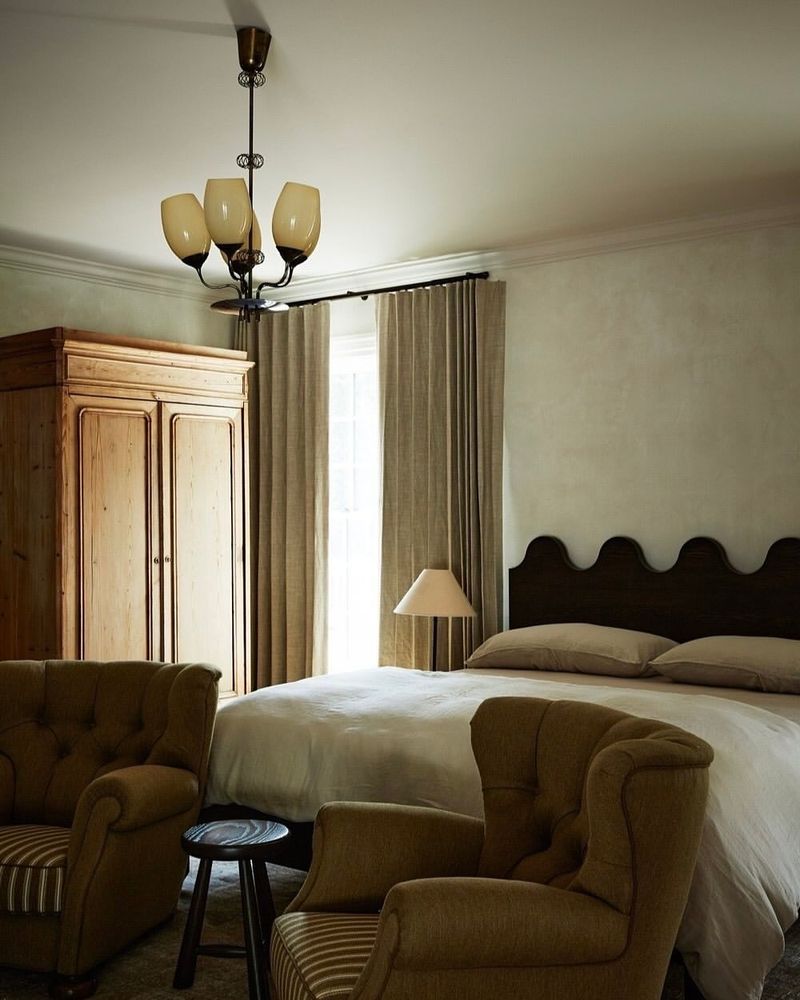
Older homes often relied on a single, harsh light source. To create a more inviting atmosphere, incorporate multiple lighting layers. Ambient lighting provides overall illumination, task lighting focuses on specific areas, and accent lighting highlights architectural features or artwork.
This layering not only adds depth and warmth to the space but also enhances its functionality, combining vintage aesthetics with modern lighting techniques for a balanced setting.
6. Heavy Drapes
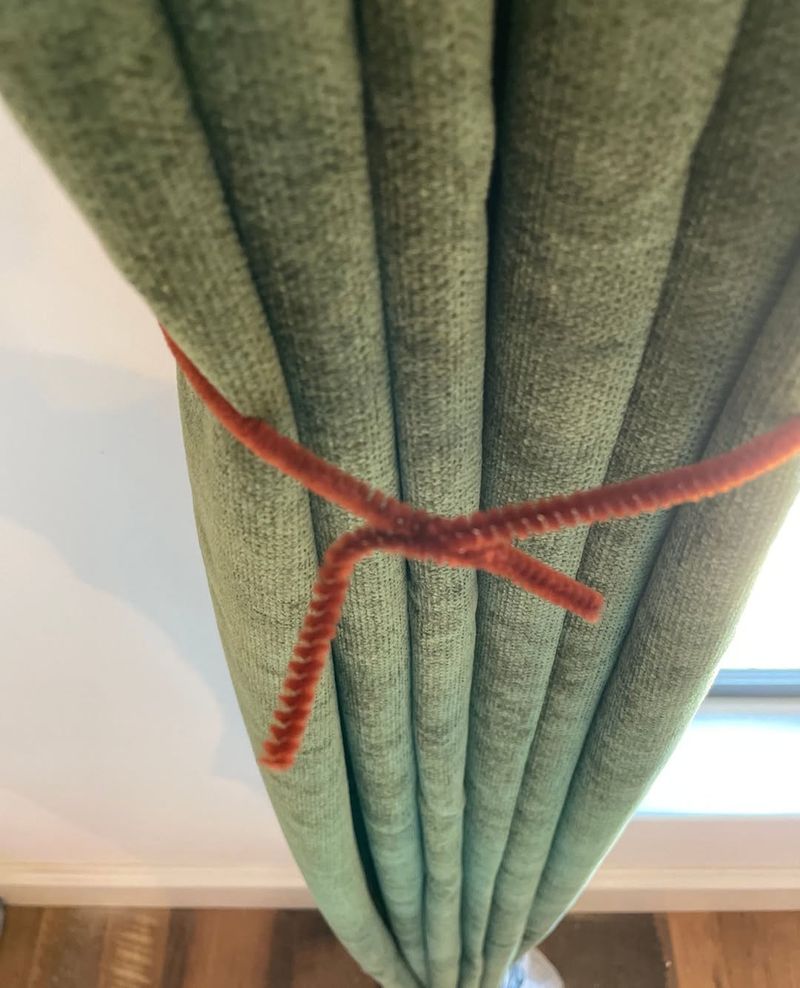
Vintage heavy curtains can darken a room and impart a stuffy feel. Opting for light and airy fabrics like linen or sheer materials can transform the space, making it feel open and bright.
These modern alternatives allow natural light to filter through, enhancing the room’s ambiance while retaining a hint of vintage elegance. This simple swap rejuvenates the space, creating an inviting environment that feels fresh and lively.
7. Tacky Wallpaper

Bold or busy vintage wallpaper patterns can dominate a space, quickly becoming overwhelming. Choosing modern wallpaper with subtle, contemporary designs offers a cleaner, updated look.
Alternatively, painting the walls in a neutral tone can provide a fresh backdrop for vintage furniture and accents. These approaches bring a sense of calm and balance, maintaining the room’s character while integrating seamlessly into a modern home.
8. Too Many Matching Pieces
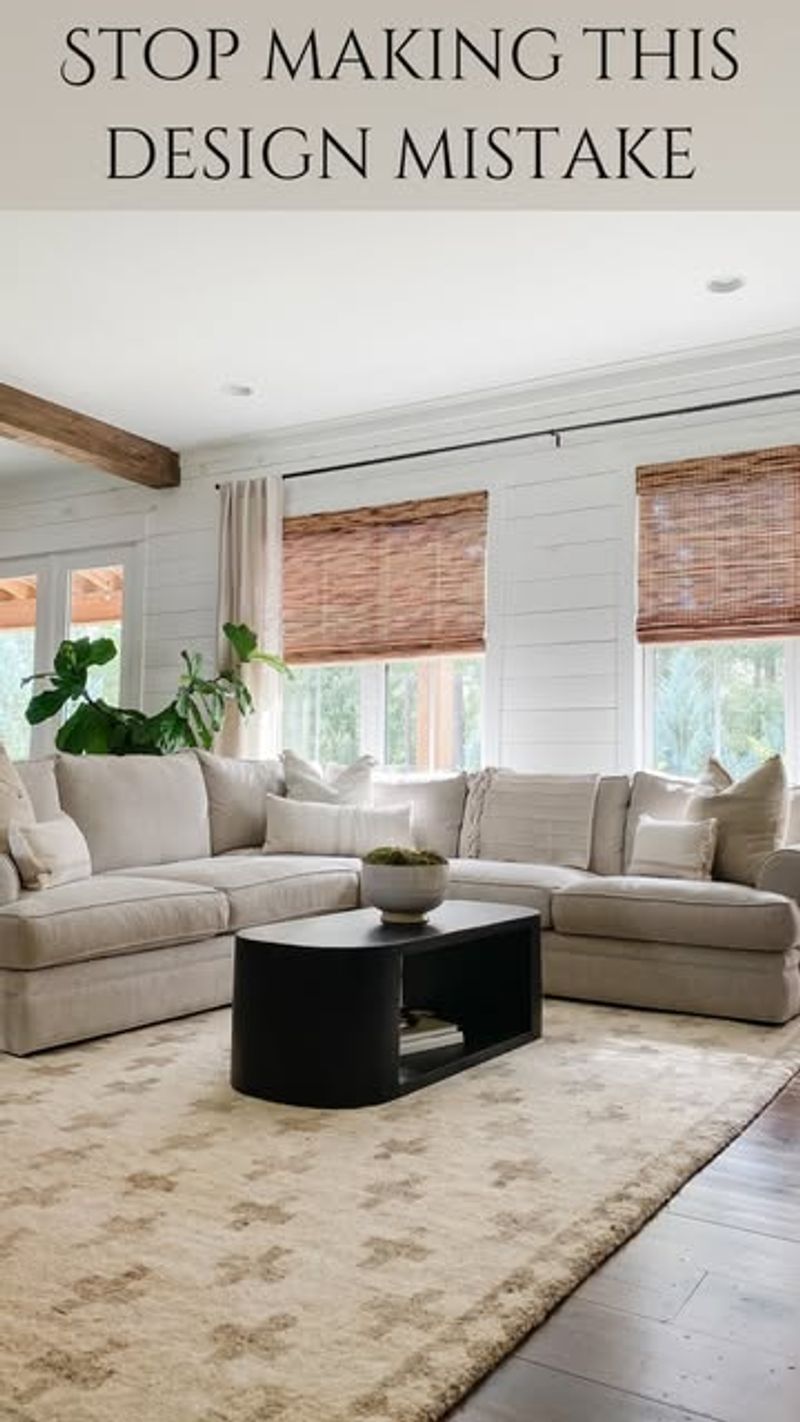
Matching furniture sets are common in vintage interiors, giving them a drab appearance. Adding diversity to the room by combining items from various periods or styles gives it depth and individuality.
Each item may tell its own tale thanks to this diverse approach, which fosters innovation.
A well-chosen assortment of furniture that transcends time and style makes the space more dynamic and intriguing by avoiding homogeneity.
9. Overly Themed Rooms
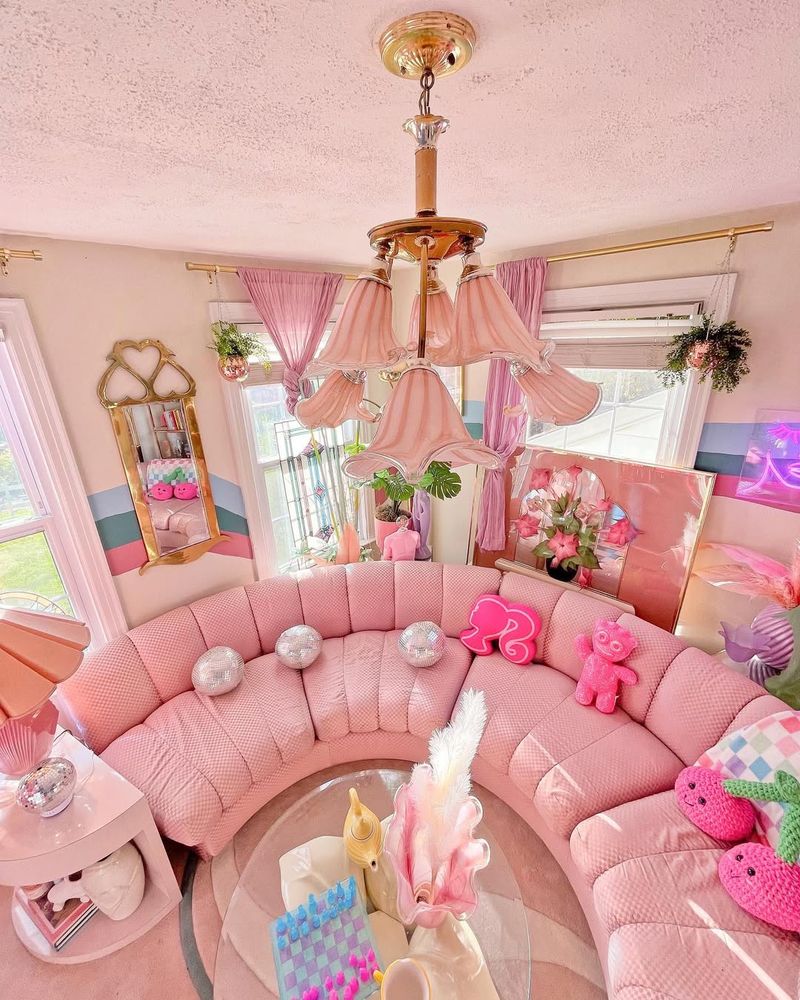
Rooms fully committed to a single theme or color can feel overwhelming. Instead, add small nods to a theme with accents like artwork or cushions. This approach maintains the vintage allure without overindulgence. By balancing thematic elements with neutral tones and textures, the space remains engaging and stylish.
This moderation prevents the décor from feeling clichéd, allowing for a timeless and sophisticated aesthetic.
10. Outdated Appliances
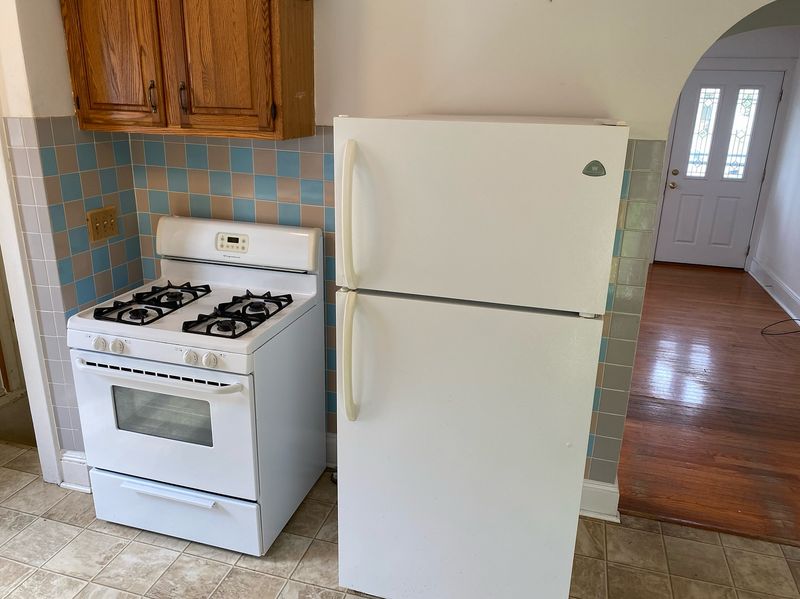
Vintage appliances, while charming, can be inefficient and cumbersome. Integrating modern, energy-efficient appliances ensures functionality while maintaining a vintage-inspired aesthetic.
Choose retro designs that blend seamlessly with existing décor, offering the best of both worlds.
11. Overcrowded Walls
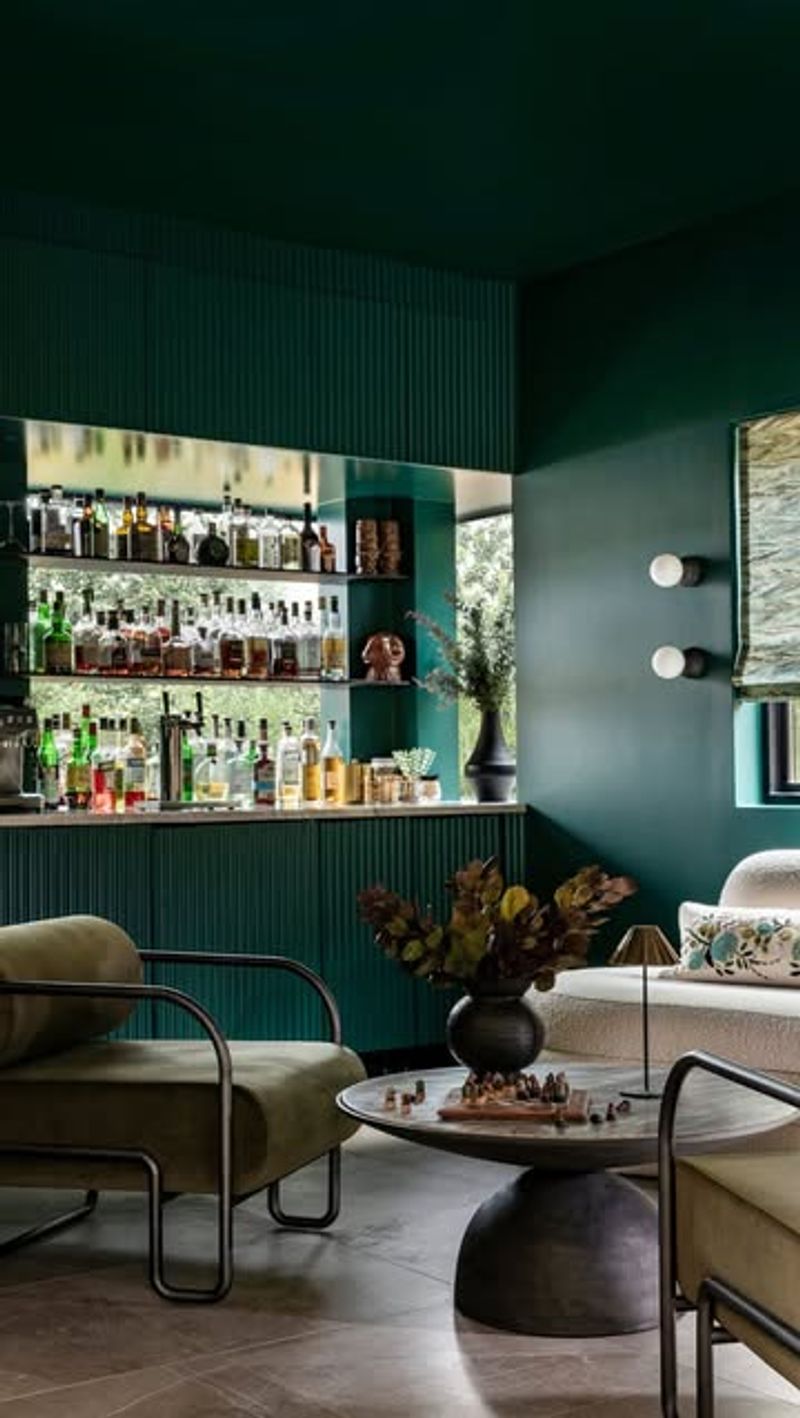
Vintage rooms often feature an excess of framed photos or artwork, leading to cluttered walls. Selecting a few key pieces and organizing them into a cohesive gallery wall modernizes the look. This arrangement highlights individual artworks while maintaining a sense of order.
By streamlining wall décor, the room appears more spacious and harmonious, blending vintage charm with contemporary sophistication in a visually pleasing manner.
12. Too Much Matching Furniture

Matching furniture sets were once the pinnacle of design but now come across as rigid and uninspired. Injecting variety through different colors, textures, and shapes can breathe life into a room.
This diversification encourages creativity and adds visual interest, allowing for a more dynamic and engaging space. By breaking away from uniformity, you create a vibrant environment that celebrates individuality and modern aesthetics.
13. Dark Wall Colors
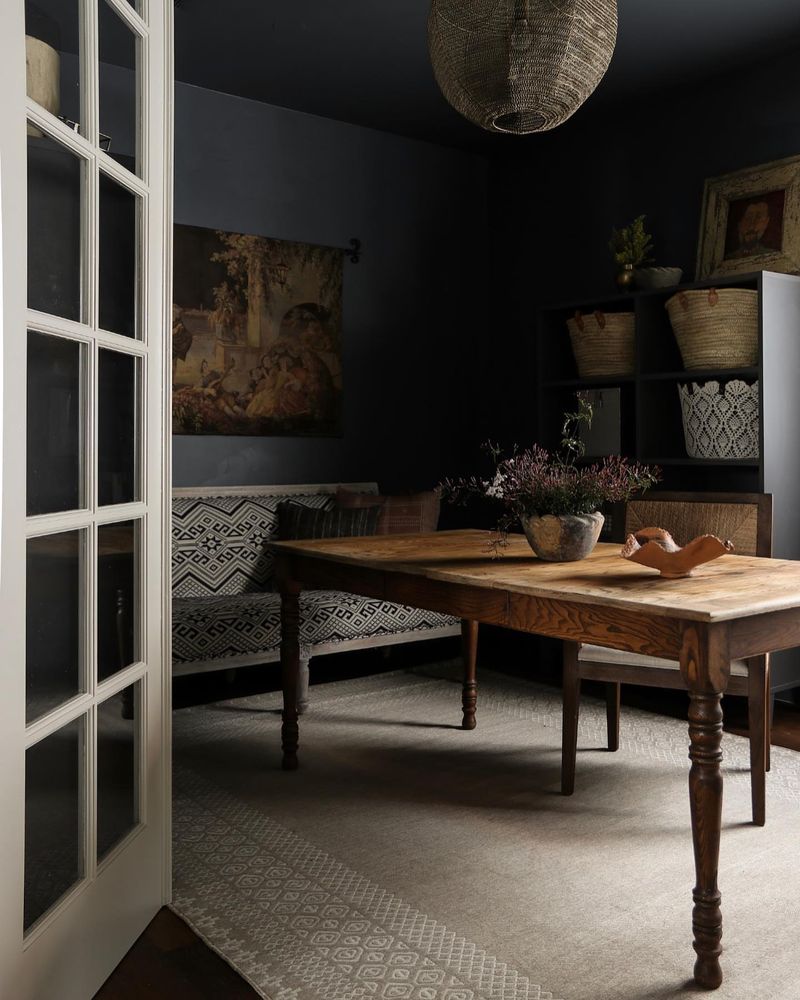
Dark walls, common in vintage décor, can make rooms feel closed in. Opting for lighter, neutral wall colors opens up the space, creating an airy atmosphere. This choice preserves the vintage vibe through carefully selected accents, ensuring the room feels inviting and spacious.
14. Outdated Flooring
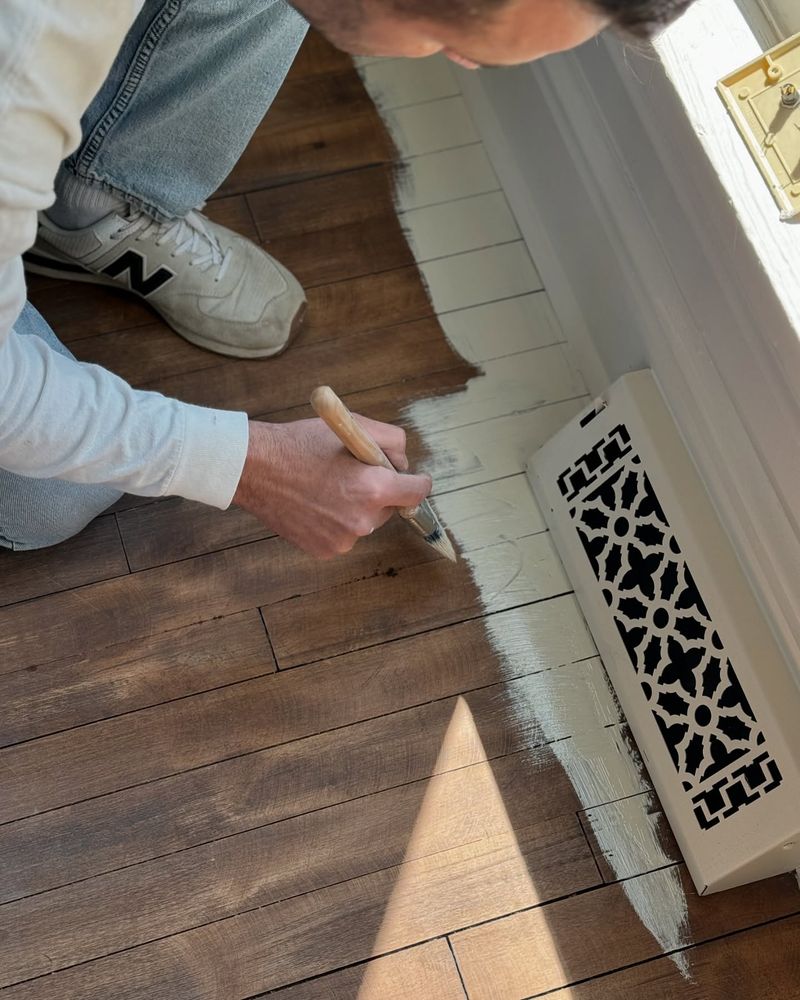
Vintage homes may feature tile or carpeting that feels outdated. Modern flooring options like hardwood, polished concrete, or sustainable cork offer a fresh update. Pair these with vintage rugs to maintain a touch of nostalgia.
This combination provides a durable and stylish foundation, merging the old with the new. Updating flooring revitalizes the space, enhancing its aesthetic appeal and functional quality, suited for contemporary living.
15. Excessive Use of Shag Rugs
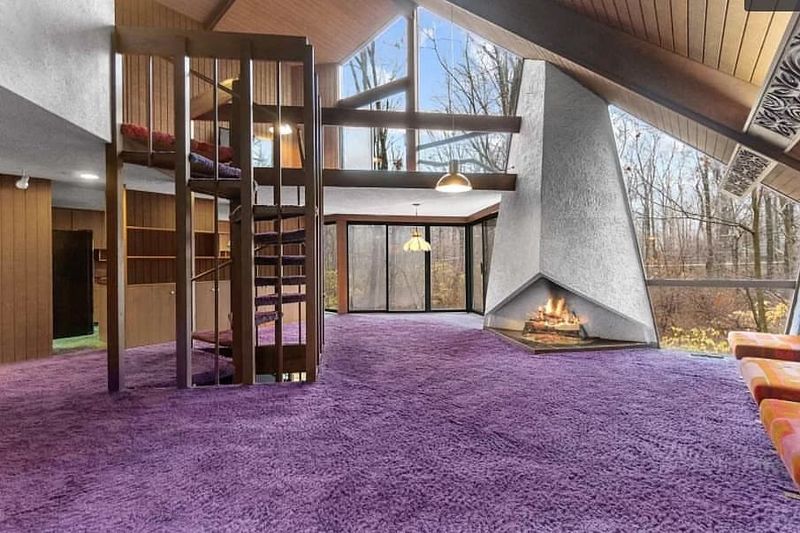
Once trendy, shag rugs now appear bulky and outdated. Opting for modern, low-pile area rugs in neutral tones offers a cleaner, more versatile look. These rugs complement vintage furniture without dominating the room, allowing other design elements to shine.
This simplicity provides a contemporary foundation that enhances the overall aesthetic, creating a harmonious blend of vintage and modern styles that feels both fresh and timeless.
16. No Clear Focal Point
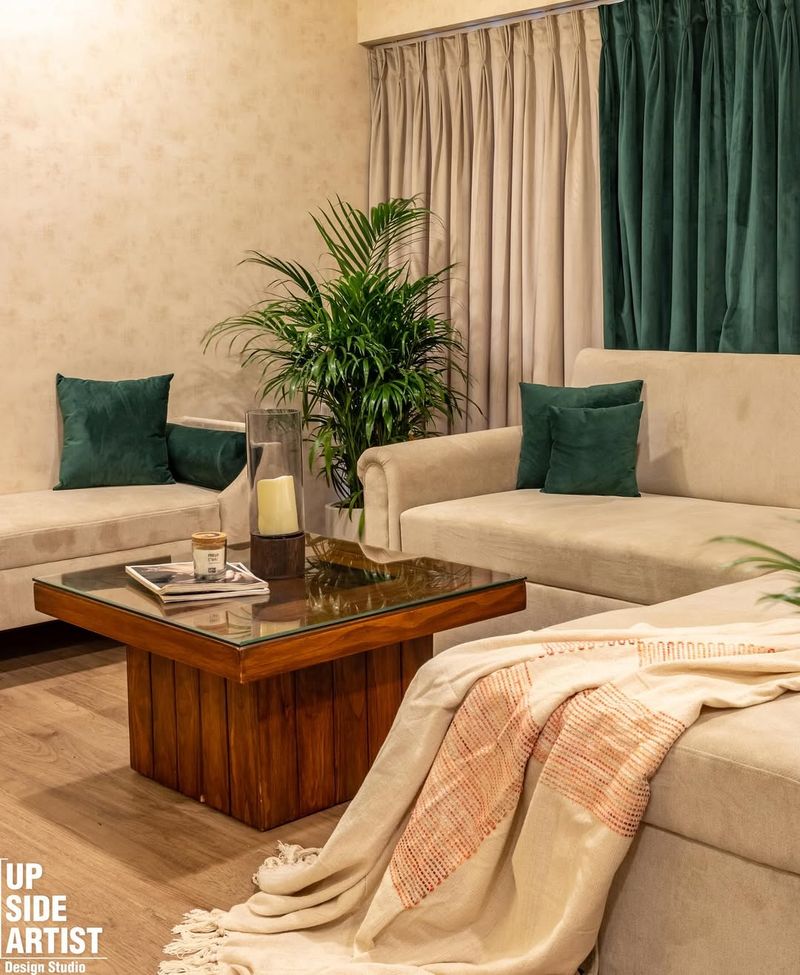
Older vintage spaces often lack a clear focal point, resulting in a disjointed feel. Creating one with an eye-catching piece of furniture, artwork, or a feature wall draws attention and provides structure. This focal point serves as an anchor for the room’s design, enhancing its cohesiveness.
17. Overdecorating with Brass
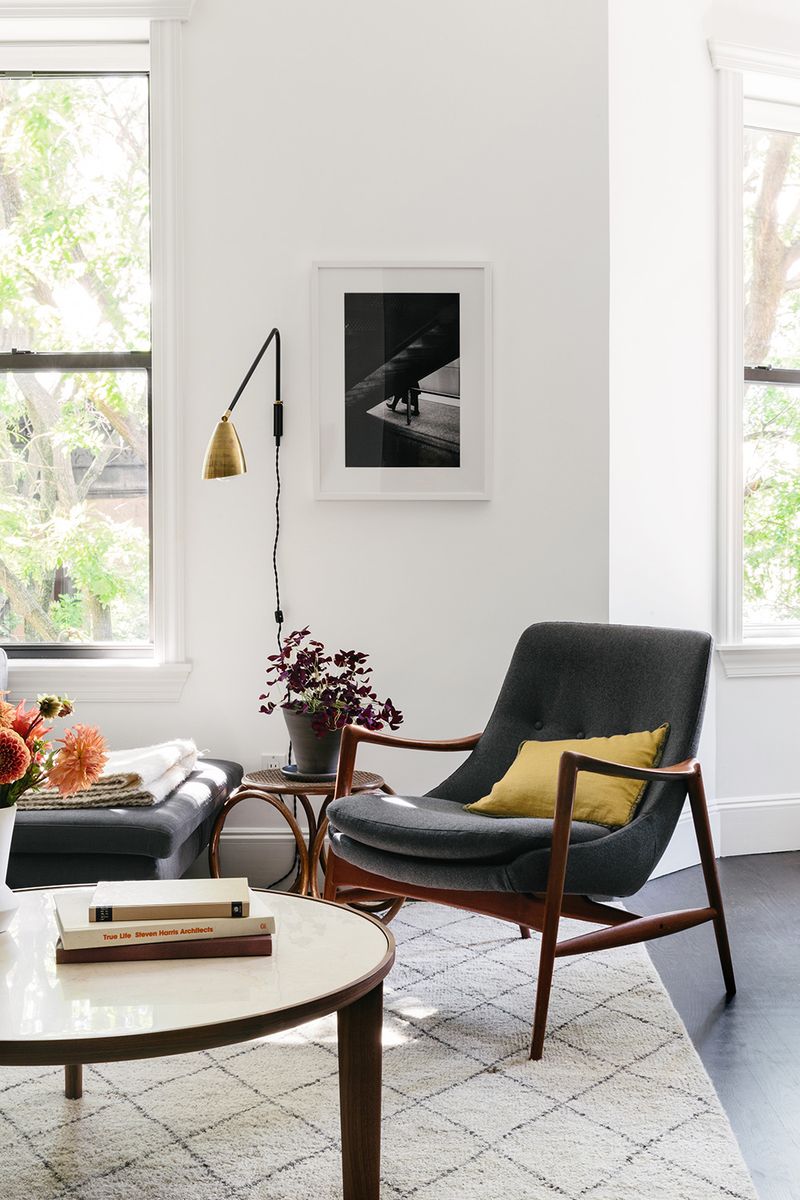
Brass accents, popular in vintage décor, can become overwhelming when overused. Swapping brass for more modern metallics like chrome or brushed nickel offers a fresher, timeless look. These metals provide a sleek, sophisticated appearance that complements vintage elements without overshadowing them.
18. Heavy, Ornate Furniture

Ornate vintage furniture can overwhelm a space, making it feel crowded. Choosing simpler, more streamlined pieces retains vintage charm while bringing a lighter, modern feel. This approach opens up the room, allowing for more flexibility in arrangement and design.
By focusing on clean lines and understated elegance, you create a balanced environment that honors vintage aesthetics while embracing contemporary sensibilities.
19. Excessive Use of Velvet
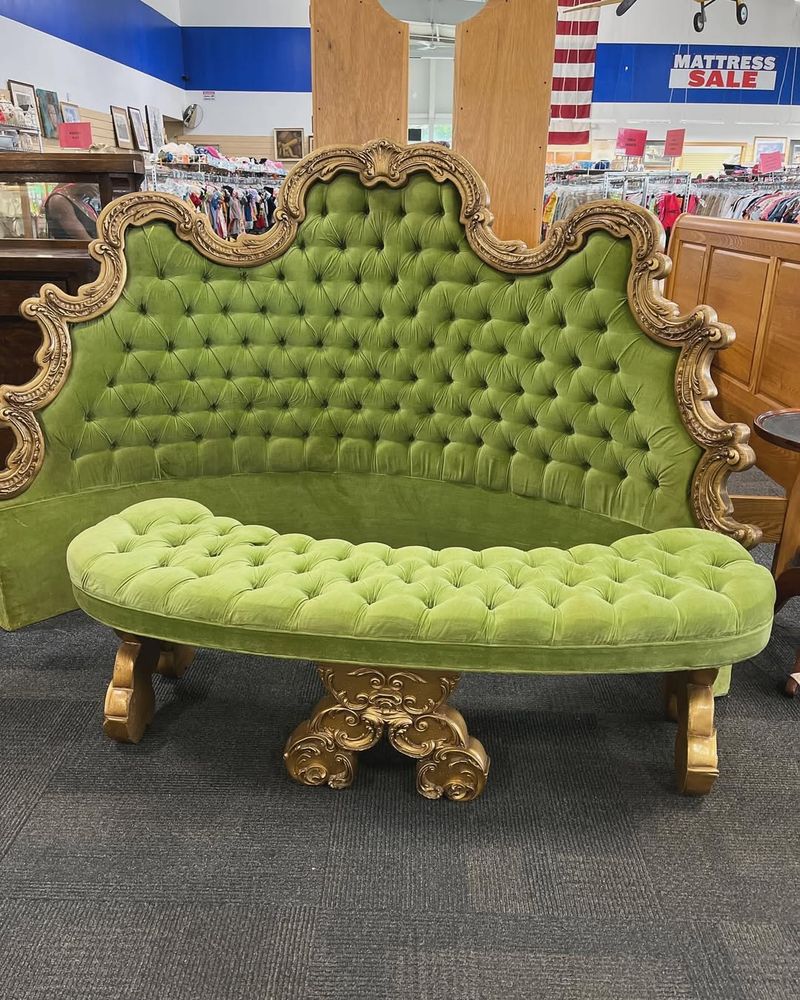
Velvet, once popular in vintage décor, can feel overly dramatic when used excessively. Incorporating velvet in small doses, such as throw pillows or curtains, adds texture and luxury without overwhelming the space.
This restrained use of velvet enhances the room’s elegance while keeping it approachable and stylish. By moderating velvet, you achieve a sophisticated look that complements both vintage and modern elements seamlessly.
20. Ignoring Comfort for Style
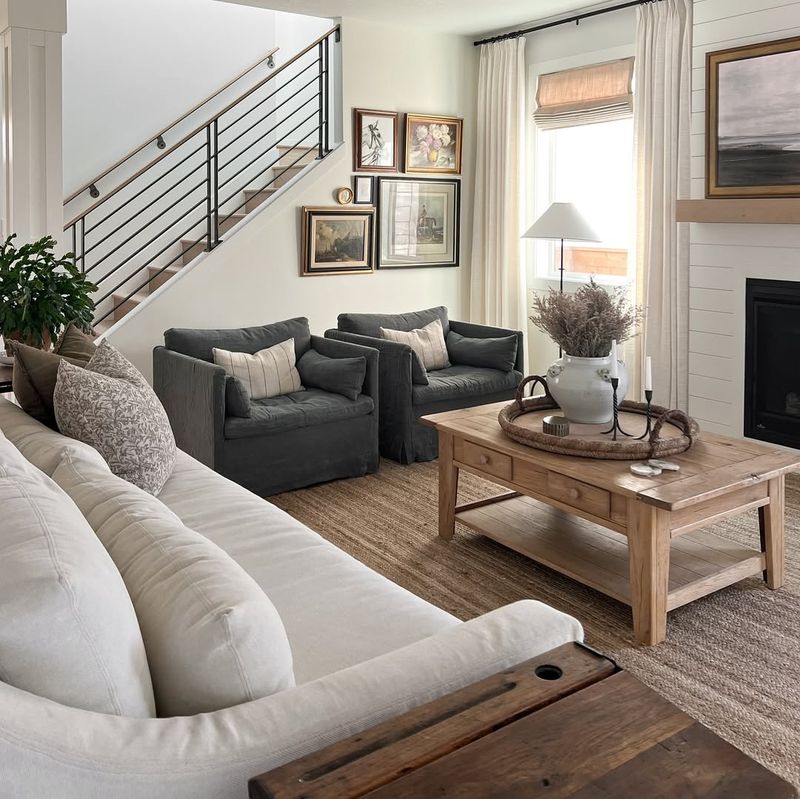
Vintage furniture often prioritizes style over comfort. Integrating contemporary pieces like plush sofas or ergonomic chairs ensures comfort without sacrificing aesthetics.
These additions provide a cozy, inviting atmosphere while maintaining the vintage charm through accent details. Balancing comfort and style allows you to enjoy the best of both worlds, creating a space that is both beautiful and livable, reflecting personal taste and practicality.
21. Overload of Textured Walls
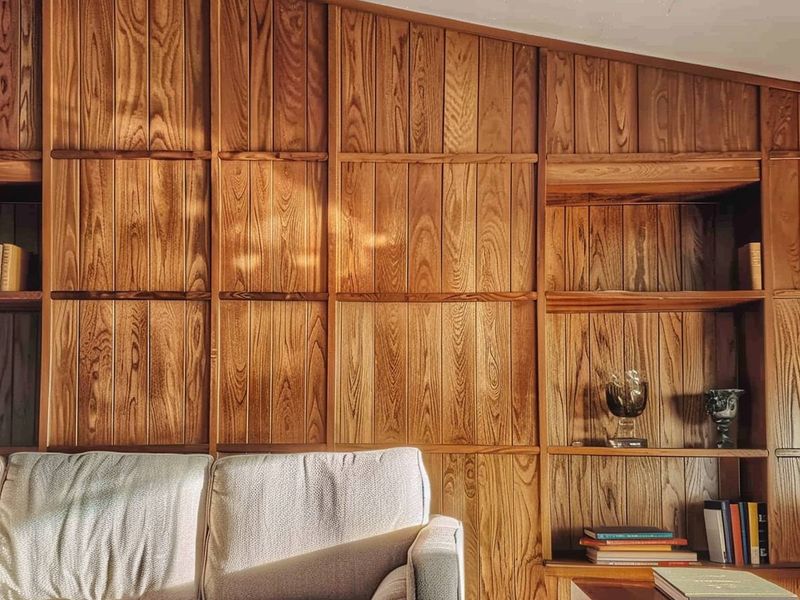
Vintage homes sometimes feature overly textured wall surfaces, such as paneling or stucco. Simplifying these walls with smooth finishes modernizes the space, allowing textures to come from fabrics and accessories instead. This shift enhances the room’s style and ensures the textures do not overwhelm.
22. Poor Use of Space
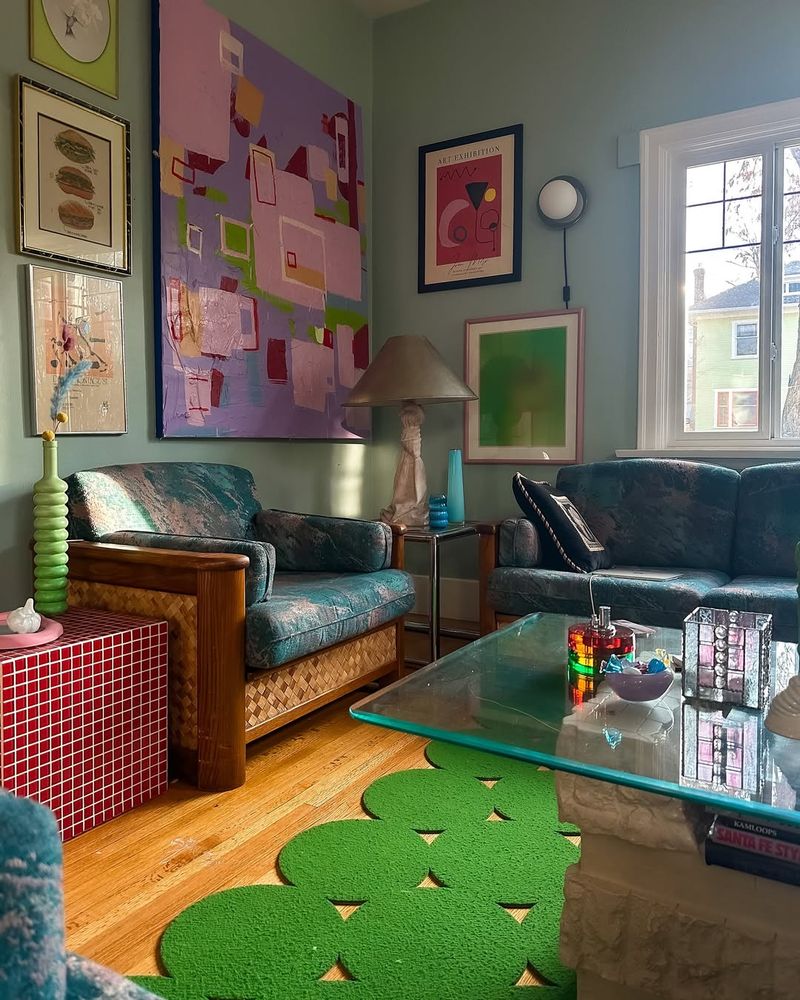
Some vintage homes fail to maximize small spaces, leading to inefficient use. Employing modern storage solutions and multifunctional furniture optimizes the area, making it more functional and aesthetically pleasing. Open shelving and cleverly designed furniture enhance usability without sacrificing style.
23. Too Many Collections

Vintage décor often features large collections of items like china or figurines, which can clutter a space. Paring down these collections and displaying only the most meaningful pieces maintains balance and highlights individual importance. This approach cultivates an organized, visually appealing environment, allowing cherished items to stand out.
24. Overuse of Ceramic Figures
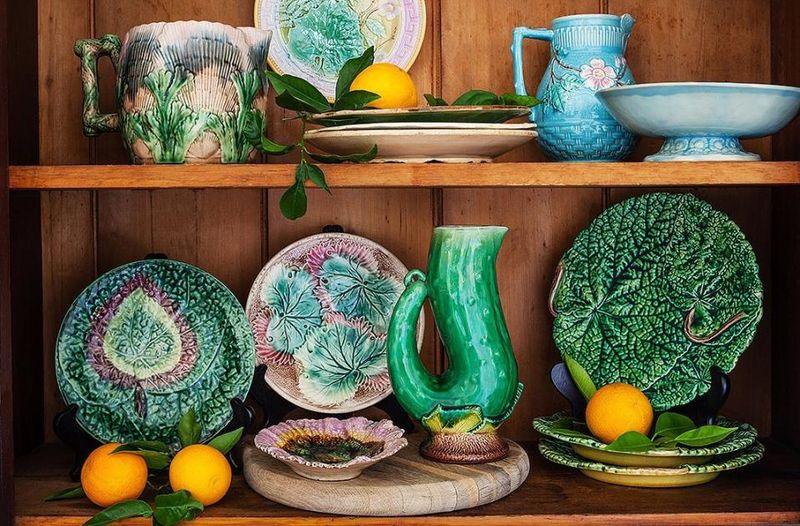
Ceramic knick-knacks once filled vintage homes but can appear cluttered. Swapping them for minimalist décor or using them as subtle accents prevents overwhelming the space. This restrained approach enhances the room’s aesthetic by focusing on simplicity and elegance.
By incorporating ceramics in a thoughtful manner, you maintain their charm while embracing a contemporary style, ensuring the room feels open and harmonious.
25. Lack of Personalization
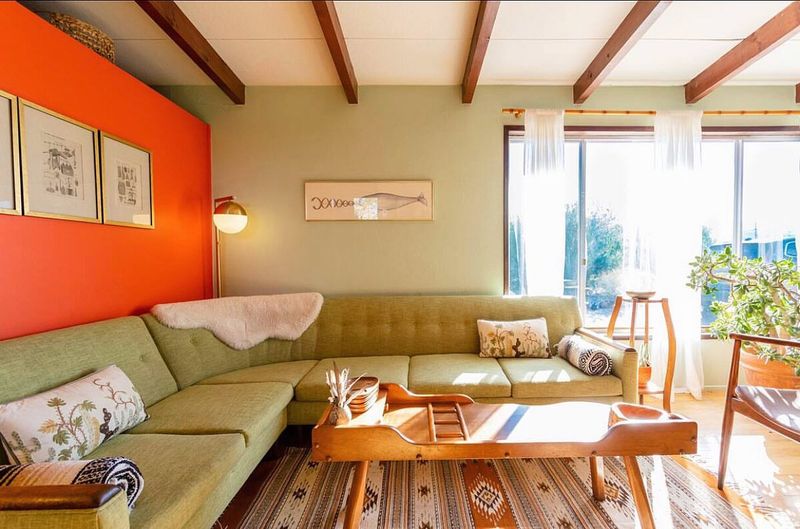
Vintage interiors can sometimes appear too uniform, lacking personal touch. Introducing personal items or family heirlooms into the design adds depth and character. Mixing these with vintage and modern elements creates a story unique to the homeowner.
This personalization fosters a sense of belonging and identity, transforming the space into a true reflection of those who inhabit it, while preserving the timeless appeal of vintage décor.

